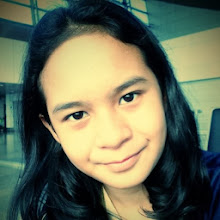Eczema Treatments for Kids
Eczema Symptoms
The main symptom of eczema is an itchy rash, which may be red, rough or irritated, scaly, and oozing. The rash typically begins in early infancy and almost always by 5 years. Although the rash does usually come under control and go away with proper treatment, it will likely come back at times.
Diagnosis of Eczema
Eczema is usually diagnosed based on the appearance of the itchy rash in typical areas, including the forehead, cheeks, arms and legs in infants, and the creases or insides of the elbows, knees, and ankles in older children.
Eczema is sometimes mistaken for other itchy rashes, including contact dermatitis, heat rash, seborrheic dermatitis, and psoriasis. The timing of when the rash started, where your child has the rash, and the pattern of when it flares up can help your pediatrician figure out if he has eczema or another skin rash.
Preventing Eczema Flares
The basics of preventing eczema flares (periods of time when your child's eczema gets worse) includes avoiding known triggers, such as harsh soaps, bubble baths, dust mites, food allergies, overheating and sweating, wool and polyester clothing, and keeping your child's skin well-moisturized. Since it is often hard to identify and avoid triggers, moisturizers can be the most helpful way to avoid eczema flares.
To help avoid dry skin, you should give your child a daily bath using lukewarm water and a mild, moisturizing soap or soap substitute. Afterwards, cover him with a moisturizer as soon as possible to seal the moisture into his skin.
Although there are many types of moisturizers, a greasy ointment will likely work best. These can include Vaseline and Aquaphor, although creams may also work well. Avoid lotions and oils. When choosing a moisturizer, you may have to try several and just see what works best for your child and be sure to reapply the moisturizer at least two or three times a throughout the day.
Nonsteroidal prescription creams and lotions can also be used instead of an over-the-counter moisturizer. These include Hylira, Mimyx, and Atopiclair.
Treatments for Eczema
When your child's eczema flares, the typical treatments include topical steroids and the newer non-steroidal medications like Elidel (pimecrolimus) and Protopic (tacrolimus). Keep in mind that there are warnings about using Elidel and Protopic in children who are under two years old or for continuous use over long periods of time.
Topical steroids can range from over the counter hydrocortisone creams, which are very mild and may even be used on the face, to stronger mid- and super-potent steroids that require a prescription. In general, super-potent steroids are avoided in children, and intermediate or mid-potency steroids are more commonly prescribed, such as Cutivate (Fluticasone), Dermatop (prednicarbate), Elocon (mometasone), Locoid Lipocream (hydrocortisone butyrate) , and 0.1 percent triamcinolone. Even these can cause side effects, including skin thinning and stretch marks if they are used for to long in the same place though. They should also not be used on a child's face or under occlusion, like under a diaper.
Newer immunomodulators or steroid-free topical medications are also available to treat children with eczema, including Elidel and Protopic. They are generally used twice a day in children over age two and can be applied to all areas where your child has eczema, including his face. They may also help avoid flares if you then begin using them at the first sign of itching or a rash.
Antihistamines are also often used as part of a good treatment regimen for eczema. They are particularly helpful if itching is interfering with your child's sleep, in which case a sedating antihistamine, like Benadryl (diphenhydramine hydrochloride) or Atarax (hydroxyzine hydrochloride), may work well. Cold compresses can also be effective at helping your child control his scratching when his skin itches.
Other treatments are also available for very difficult to treat cases of eczema, including using wet dressings, oral steroids, ultraviolet light therapy, and immunosuppressive drugs, like cylcosporin.
What You Need To Know
Although there is no cure, many children either outgrow their eczema, or it at least gets better as they get older.
Eczema does run in certain families and can be associated with other 'allergic'-type disorders, like allergic rhinitis and asthma.
You should apply moisturizers on top of your child's other topical medications during eczema flares.
Most experts now recommend that your child take a daily, 10-minute bath to help moisturize his skin. As long as you place a moisturizer or lubricant on his skin within two or three minutes after his bath, it should keep his skin healthy and well hydrated.
Be ready for times when your child's eczema may get worse, including the winter, when your house may be dry, and summertime, when he may be swimming or getting overheated outside.
Keep in mind that skin infections often accompany difficult to treat eczema flares and your child may sometimes require an antibiotic, in addition to his usual eczema treatments.
If your child's eczema isn't improving with standard treatments, see a pediatric dermatologist for further help and treatment advice.
Source:
Habif: Clinical Dermatology, 4th ed. Dry skin and Xerosis.
shoppezzone
13 years ago







No comments:
Post a Comment